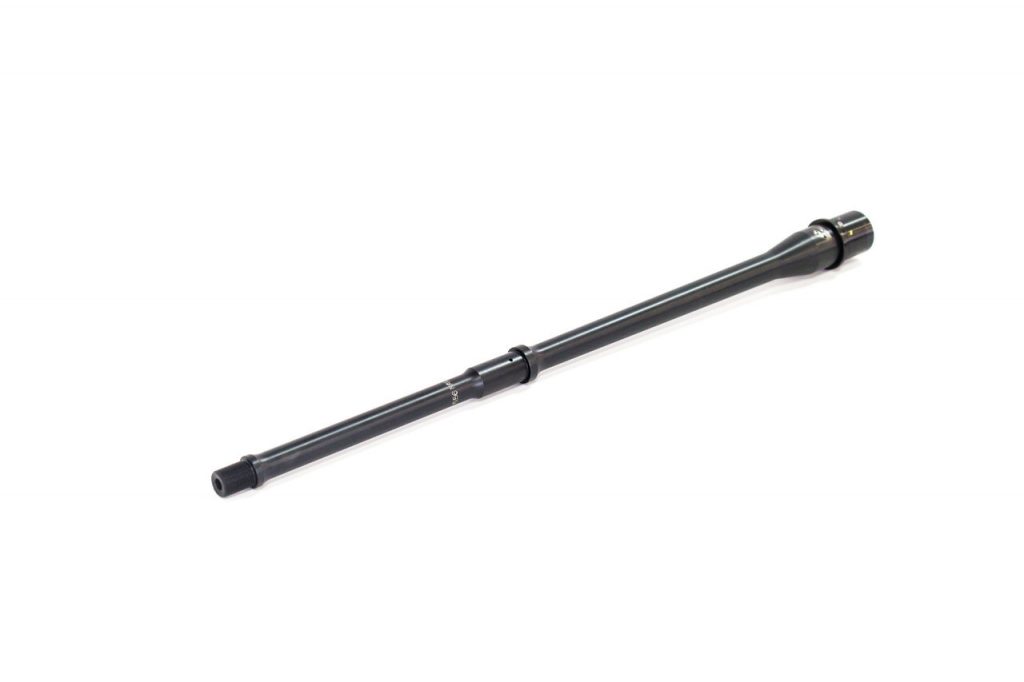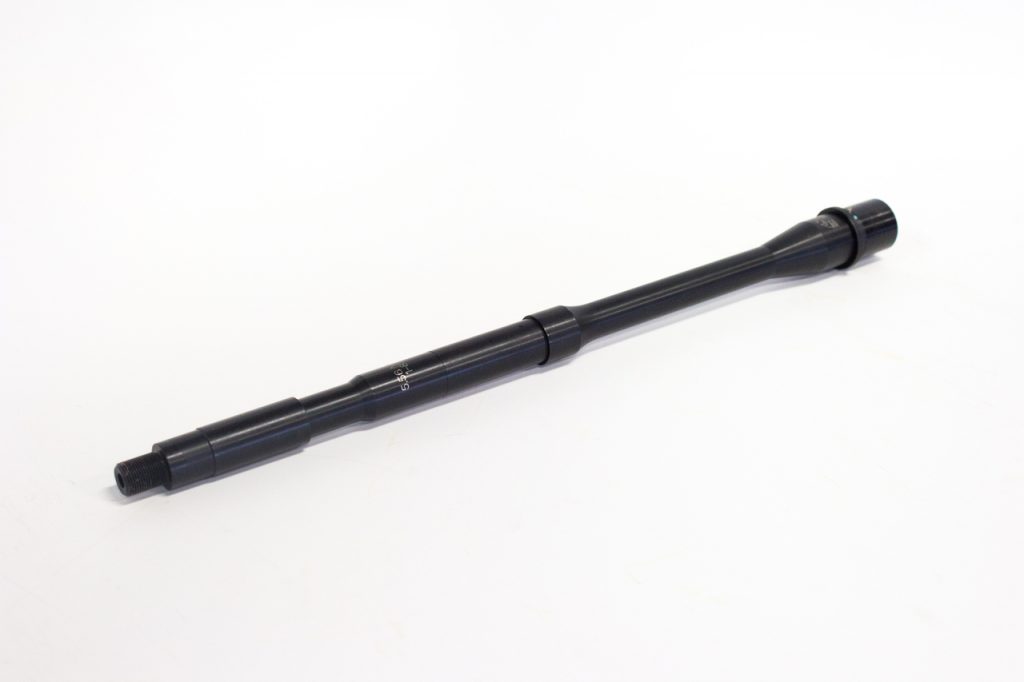The original M16/AR-15 from Colt was produced with a pencil barrel. Later iterations of the rifle and carbine had a heavier and thicker barrel because it was found that the pencil barrel would flex when it got hot. The barrel flexing resulted in a change in the point of impact. The practical effect of this barrel flexing for the military was that shots ostensibly on target were missing the enemy at longer ranges.
You can see the difference in thickness between a pencil barrel and a “government” profile barrel in the pictures below. Both of these barrels (and the pictures of them) are from Faxon Firearms.
 |
| Faxon 16″ pencil barrel |
 |
| Faxon 16″ M4 government profile barrel |
Ian and Karl at InRange TV are doing a series called “What Would Stoner Do”. The latest in their WWSD series tests the effect that heat can have on pencil barrels and the point of impact. They tested both a modern Faxon barrel and an original Colt SP1 barrel. Faxon claims that their proprietary method of building in stress reliefs mitigates the significant change in point of impact caused by heat. Part of Ian and Karl’s reasoning behind testing pencil barrels is that a pencil barrel is a quick way to reduce the weight of the rifle.
I found this highly interesting as I am in the process of assembling parts to make a lightweight AR using this same Faxon pencil barrel. I got a great deal on one at the recent NRA Annual Meeting and decided that I “needed” another AR. I am also in the process of putting together a retro styled clone of the M16A1 using a mix of original and modern parts. This latter rifle uses a 20″ barrel from Green Mountain Rifle Barrels which has the original 1 in 12″ twist. My dad qualified Expert with such a rifle back in the 1960s and the build is partly meant to honor him.
